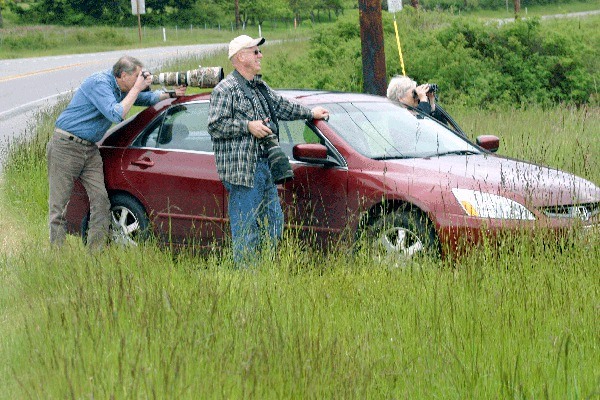A newly mowed hay field last Wednesday afternoon brought out several eagles looking for an easy meal.
Following the eagles was a group of bird enthusiasts with cameras and binoculars standing at the side of Highway 20 to view and photograph the majestic raptors in action.
“I always go out on my day off and shoot,” said Clinton resident Paul Lischeid between camera clicks. Lischeid said he recently counted 27 eagles in a field near the Seaplane Base.
“Whenever they cut any of these fields, they show up,” said Bruce Barchenger, a Freeland resident who was also photographing eagles in the field near the intersection of Highway 20 and Waterloo Road.
Freshly mowed hay fields are a popular place for the island’s eagle population to feed as the cut grass leaves critters vulnerable to flying predators. During the last Penn Cove Water festival held in May, half dozen bald eagles were foraging for food in another recently cut hay field near Coupeville.
“They go there to scavenge reptiles, rabbits and rodents,” said Gary Piazzon, a member of the Whidbey Audubon Society, in a telephone interview. “It’s like ringing the dinner bell.”
As far as Whidbey Island is concerned, Piazzon described the eagle population as “thriving.”
“Eagles have made a tremendous recovery on our island,” Piazzon said, adding there are more than 50 eagle nests and 50 breeding pairs of eagles scattered throughout Whidbey Island.
Almost all the eagles found on Whidbey Island are bald eagles; however, Piazzon said he spotted a golden eagle last February on a field trip near Deer Lagoon. Such eagles are a rare sight on Whidbey Island but common in Colorado and elsewhere.
He credited efforts to protecting the eagles’ nesting sites, the ban on DDT and the Endangered Species Act as reasons for the eagle revival on Whidbey Island.
When it’s not haying season, Whidbey beaches generally seem to be the best places to view eagles, Piazzon said. The area around Coupeville is also known as popular eagle-viewing areas. Eagles will search for carrion and hunt sea ducks and salmon, Piazzon said, and the transfer station attracts eagles looking for an easy meal.



